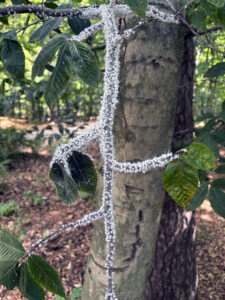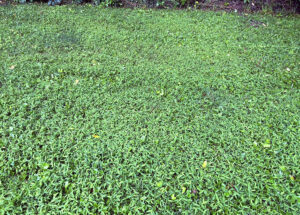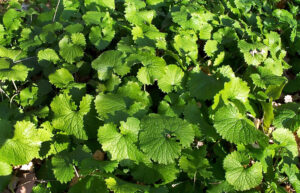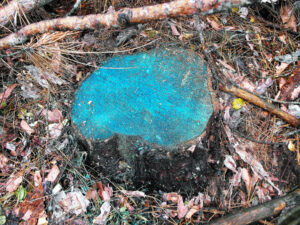
A freshly cut tree stump after treatment with fungicide to prevent infection with Heterobasidion root disease. The fungicide is dyed blue to help ensure complete coverage. / Photo Credit: Wisconsin DNR
By Tim Shively, DNR Forest Health Specialist, Eau Claire
Timothy.Shively@wisconsin.gov or 608-772-6974
Treating freshly cut conifer stumps is critical to preventing infection by Heterobasidion species, causal agents of Heterobasidion root disease (HRD).
Within this genus, H. irregulare is believed to be the only species in Wisconsin, and it causes the mortality of overstory pine and spruce trees. The DNR has developed comprehensive guidelines to assist landowners, property managers, foresters, and loggers with determining whether stump treatments are necessary to prevent the introduction or spread of HRD at a given site.
Continue reading “Stumping Heterobasidion Root Disease With Cellu-Treat®”

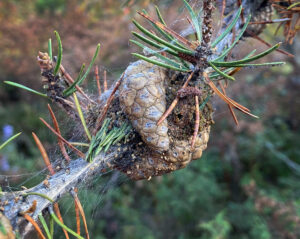
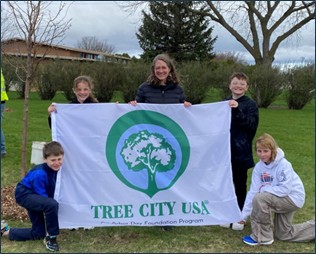 The online portal for Tree City USA (TCUSA) is
The online portal for Tree City USA (TCUSA) is 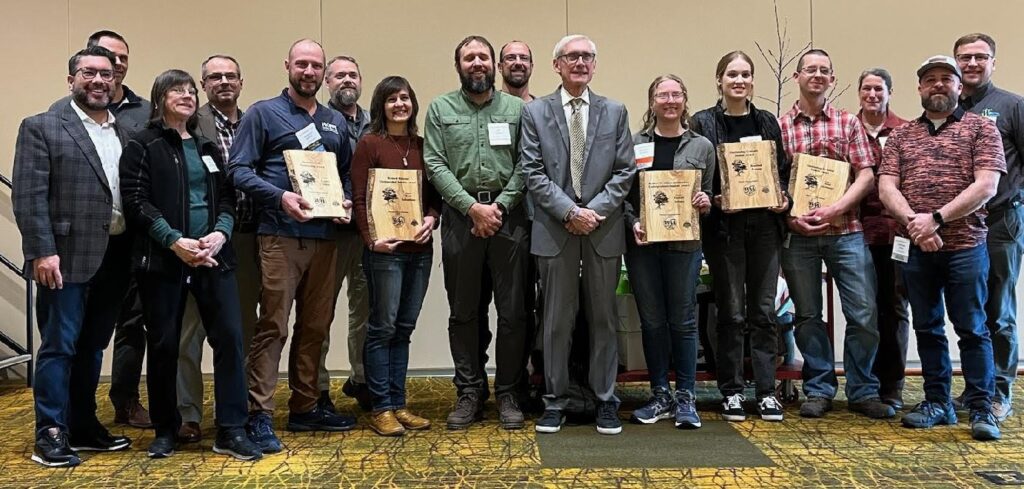 Do you know of a person or organization that is making a difference in community forestry? Maybe it is a volunteer who spends their free time planting trees in the community or an organization that is committed to increasing tree diversity or a municipal employee who has dedicated their career to transforming a city’s urban forestry program. If so, please complete this short
Do you know of a person or organization that is making a difference in community forestry? Maybe it is a volunteer who spends their free time planting trees in the community or an organization that is committed to increasing tree diversity or a municipal employee who has dedicated their career to transforming a city’s urban forestry program. If so, please complete this short 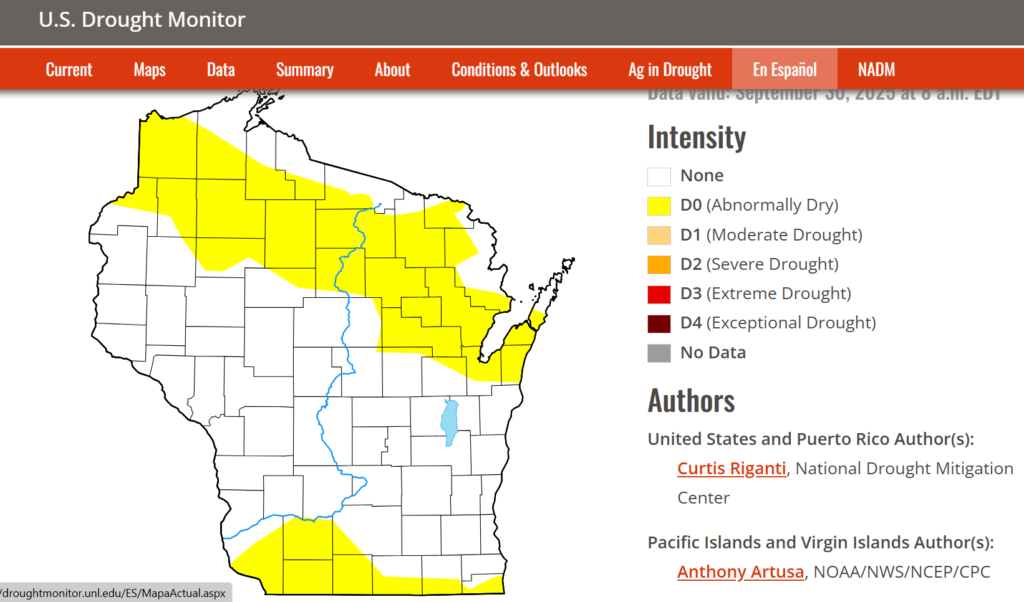
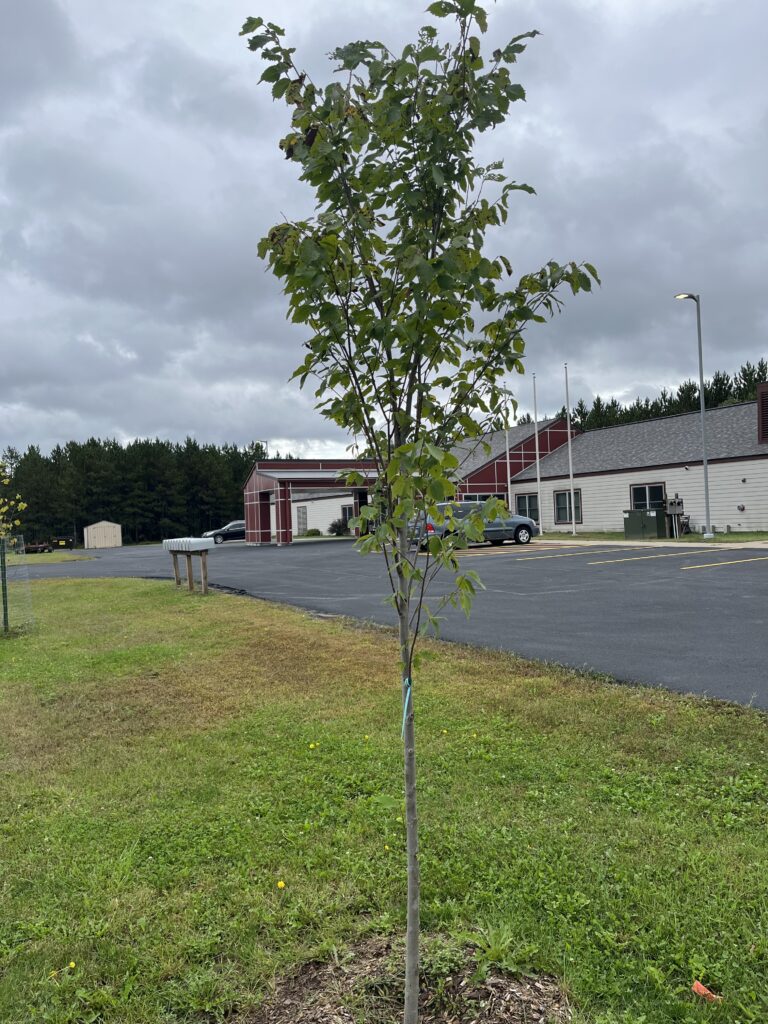
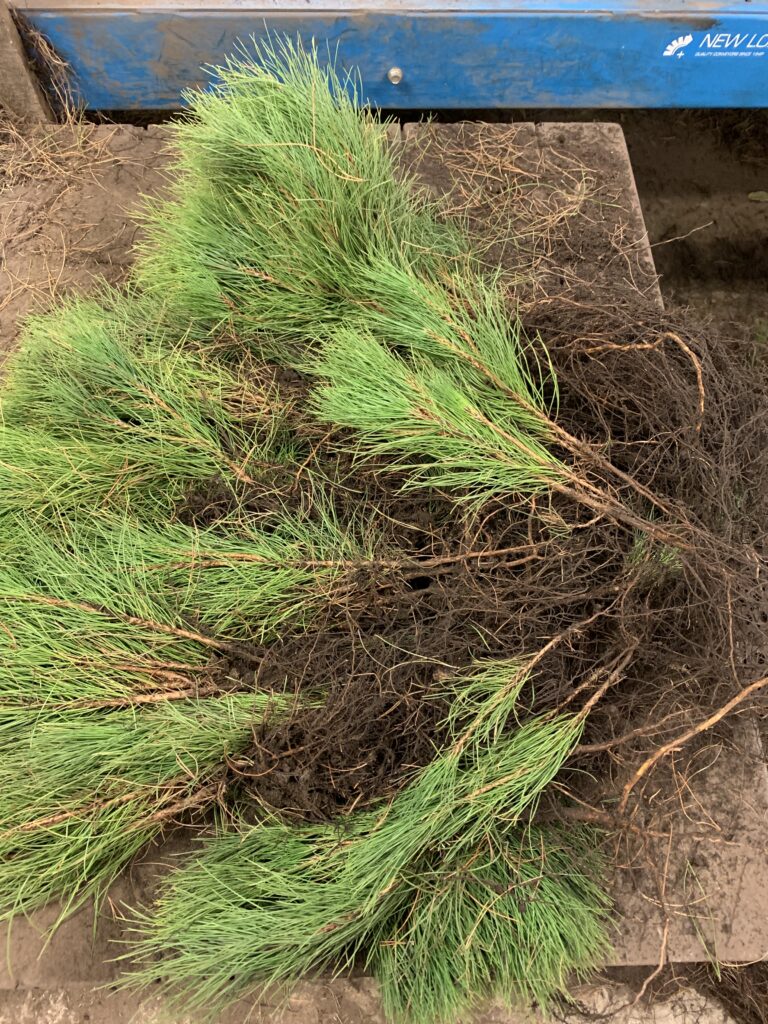 The Wisconsin Department of Natural Resources (DNR) is accepting seedling orders from Wisconsin landowners for trees and shrubs to be planted in spring 2026, starting Oct. 6, 2025.
The Wisconsin Department of Natural Resources (DNR) is accepting seedling orders from Wisconsin landowners for trees and shrubs to be planted in spring 2026, starting Oct. 6, 2025.